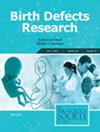Assessing the Readability, Credibility, and Accuracy of Online Vaccine Information for Pregnant and Lactating Individuals: A Cross-Platform Analysis
Abstract
Background
Pregnant and lactating individuals frequently rely on online sources for vaccine information. However, the readability, credibility, and accuracy of such content vary widely, potentially influencing vaccine hesitancy. This study evaluates the accessibility and reliability of online vaccine information across different digital platforms.
Methods
A cross-sectional content analysis was conducted on vaccine-related content published between 2018 and 2022. Data were collected from official health websites (e.g., WHO, CDC), social media (Twitter, Facebook), blogs, and parenting forums. Readability was assessed using the Flesch–Kincaid (FK) and SMOG indices, while credibility was evaluated using the DISCERN tool and HONcode certification. Accuracy was determined by comparing claims against scientific evidence from authoritative health organizations. Statistical analyses, including one-way ANOVA and chi-square tests, were performed to examine readability differences and misinformation prevalence across platforms.
Results
Official health websites had the highest readability complexity (average FK grade level: 11.8 ± 1.2), while social media content was the most accessible (average FK grade level: 7.8 ± 1.0). However, social media also exhibited the highest misinformation prevalence (38%), whereas official sources maintained near-perfect accuracy (98% compliance with scientific evidence). Blogs and forums demonstrated moderate readability (FK grade level: 9.5 ± 1.4 and 8.7 ± 1.1, respectively) but varied in credibility (DISCERN scores: 40–50/80). Thematic analysis revealed dominant misinformation trends, including fear-based narratives (52% of misinformation cases) and scientific distortions (29%). Accessibility barriers were also identified, with only 10% of sources providing multilingual content, and disparities in digital health resources were observed between high- and low-income regions.
Conclusion
This study highlights the trade-off between readability and credibility in online vaccine information. While official sources provide reliable content, their complexity may hinder comprehension. Addressing accessibility gaps through plain-language communication and misinformation mitigation strategies is crucial for improving digital health literacy and supporting informed maternal vaccine decision-making.

 求助内容:
求助内容: 应助结果提醒方式:
应助结果提醒方式:


